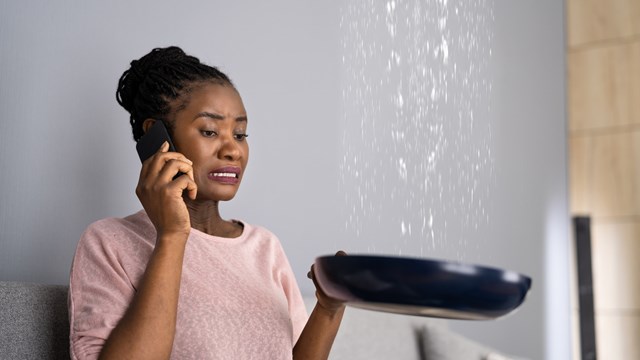Molds are naturally occurring organisms that are present almost everywhere. While molds need both moisture and nutrients to grow, moisture is the primary factor that promotes indoor mold growth. Therefore, whenever there is a water leak in a home or residential building, there is the potential for a mold-related legal claim.
Mold-related claims have grown exponentially in recent years. In Texas, for example, the number of mold-related claims increased by more than 1,300 percent between the beginning of 2000 and the end of 2001, and, during the period 2000 to 2003, mold-related claims cost Texas insurance companies approximately $4 billion.
Texas, however, is not alone. Mold-related claims have proliferated throughout the United States. According to the Insurance Information Institute, there are more than 10,000 mold-related lawsuits currently pending in state courts across the country. In New York, mold-related claims tripled in 2002, and by 2003, New York ranked fourth nationwide in the number of mold-related claims, behind California, Texas and Florida.
The “Mold Rush” Begins
A major contributing factor to the explosion of mold-related litigation was preliminary data in studies conducted by the United States Centers for Disease Control and Prevention (CDC) in 1994 and 1997. The research indicated an association between exposure to household fungi and the development of acute idiopathic pulmonary hemorrhage (AIPH) in infants living in the Cleveland area. However, the CDC subsequently withdrew the findings when it admitted that evidence was not of sufficient quality. But by then, it was too late; the “mold rush” was underway.
In June 2001, a Texas jury awarded a verdict for over $32 million. The award did not include damages for personal injuries and was later reduced on appeal to $4 million, but the case was widely publicized. It was also reported that there were multimillion-dollar mold claims by celebrities such as Ed McMahon (in California), Erin Brockovich (in California), Bianca Jagger (in New York City) and Michael Jordan (in Washington, D.C.). Suddenly, molds—which have played an important role in sustaining plant and animal life for hundreds of millions of years by breaking down organic matter—were deemed “toxic” and referred to as “the silent killer” by the media and those seeking to profit by sensationalizing the issue.
The lack of scientific and medical studies establishing a causal link between the presence of mold in indoor residential environments and illness has not deterred plaintiffs and their lawyers. They merely ascribe a plaintiff’s nonspecific (i.e., not disease specific) symptoms to ominous-sounding, pseudo-diagnostic categories, such as ‘toxic mold syndrome,’ ‘sick building’ syndrome, ‘multiple chemical sensitivity’ and ‘idiopathic environmental intolerance,’ and file their lawsuits nonetheless.
A Recent Decision
In one such recent lawsuit, Fraser v. 301-52 Townhouse Corp., a New York County Supreme Court Justice handed down an important ruling with respect to the admissibility of scientific and medical evidence in a case involving a family that resided in a Manhattan co-op apartment. The Frasers, seeking millions of dollars in damages, alleged that water leaks had promoted the growth of mold in their apartment, which, in turn, caused them to suffer various nonspecific symptoms (such as headaches, itchy eyes, stuffy nose, sore throat and fatigue). The cooperative took the position that the Frasers’ theory of causation is not generally accepted as reliable by the relevant scientific and medical communities, and filed a motion to preclude the Frasers’ medical experts from testifying at trial.
The court conducted what is known as a Frye hearing (named after a 1923 case) to determine whether the subject of the proposed expert testimony is generally accepted in the relevant scientific community. Four doctors testified over the course of ten days, and the court admitted into evidence hundreds of pages of scientific and medical papers, as well as several books.
After a thorough review of the testimony and the scientific and medical literature, the court found—in a decision handed down in September 2006—that the Frasers had “failed to demonstrate that the community of allergists, immunologists, occupational and environmental health physicians and scientists accept the theory that mold and/or damp indoor environments cause illness.” Accordingly, the court dismissed all of the Frasers’ mold-related personal injury claims.
A Prior Decision
Fraser was not the first Frye ruling in New York after a hearing in a mold case. A few years earlier, in Davis v. Henry Phipps Plaza South, hundreds of apartment residents sued a building’s property management company, owners and others for billions of dollars, alleging personal injuries, property damage and death from mold exposure. The court conducted a Frye hearing limited to the issues of whether mold could cause neurological injuries, like brain damage and/or cognitive impairment. In an unpublished ruling, the court found that exposure to mold in an “indoor environment has not gained general acceptance in the scientific community as a cause of brain injury, including cognitive impairment.” Soon thereafter, the case settled for an insignificant fraction of the original claims.
The Fraser and Davis rulings demonstrate that the scientific and medical “evidence” of mold injury proponents will be carefully scrutinized. The Fraser decision, in particular, will have an immediate impact on other mold-related personal injury cases. As important as the Fraser and Davis rulings are, however, they are decisions from trial courts, and, thus, will not be the last word on mold. Indeed, the Frasers have already filed a Notice of Appeal.
Even if the decision in Fraser is upheld, it is important to note that the Fraser and Davis rulings focused on personal injury claims. The presence of water inside a building envelope—whether from faulty gutters, a roof in disrepair, a cracked exterior wall or foundation, condensation, plumbing or sewage system leaks, broken bathroom tiles or an overflowing sink—must be promptly and appropriately addressed by cooperative boards and management, and remedied by the party responsible under the proprietary lease.
Andrew Brucker, a partner, and Thomas V. Juneau, litigation associate, are with the Manhattan-based law firm of Schecter and Brucker, PC.







Leave a Comment